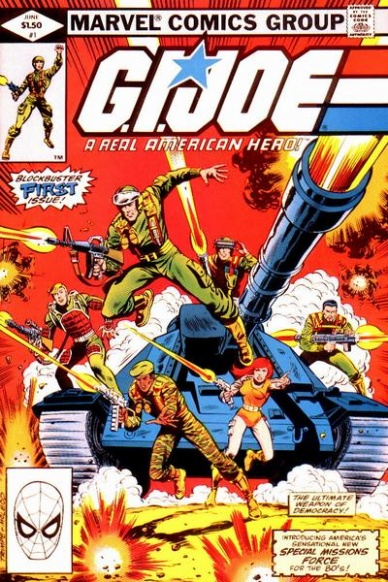Multiversity’s history column is back with events from June of yesteryears. This time, we’re looking at the first time two characters crossed over in the same story, the first mainstream comic named after a black character, and the first time a comic was advertised on TV. As an extra bonus, you can also read about an important library’s comic exhibit!

Last August, I told you about “Marvel Comics” #1 from 1939, and how it introduced Marvel’s first two superheroes, Namor and Human Torch. Despite their natural duality as water and fire, they were created independently and appeared in separate stories within the anthology. Someone at Funnies Inc must have noticed how well the characters complemented one another pretty quickly, because by the summer of 1940 they were paired in the first comic book crossover.
Readers may have already assumed Namor and Human Torch shared a universe since they both lived in New York and starred in the same comic book, but the concept was novel at the time and probably delighted some of them as much as Robert Downy Jr’s appearance at the end of Incredible Hulk delighted film goers in 2008. It started small when they began sharing a supporting cast in “Marvel Mystery Comics” #7, then bloomed into the trope-defining fight between the two heroes that ran across issues 8, 9, and 10. During this encounter, the page counts for the two features was combined to offer readers one mammoth 22-page story.
After meeting once, they were bound to do it again, like they did in the pages of “Marvel Mystery Comics” #17. A few months later, National Periodical Publications and All American Comics would take the idea even further and combine their existing heroes in a massive crossover in “All Star Comics” #3, kick starting the Justice Society of America.

By 1972, mainstream comics had been working to reflect the real world for a few years. “Fantastic Four” introduced Black Panther in 1966. Denny O’Neill and Neal Adams introduced socially relevant stories to “Green Lantern” in 1970. Marvel marked a major milestone with the June 1972 publication of “Luke Cage: Hero for Hire”, the first mainstream comic named after a black character.
Of course, this first comes with several technicalities. I specify that it was a the first mainstream comic because Larry Fuller beat Marvel to the punch by a couple years with his underground superhero Ebon, starring in “Ebon”. According to the indicia (the block of small type with all the publisher and copyright information), the official title was just “Hero for Hire” and the “Luke Cage” was just cover dressing. It did have an official name change to “Power Man” at issue 17, and according to my research there were no other titles named after a black character at that time. I’ll leave it to you readers to decide which of these, “Hero for Hire” #1 or “Power Man” #17 really deserves the title of First Mainstream Comic Named After a Black Character.

Comics based on toys began in January 1979, and they were a big hit. Because of a change to the laws covering advertising to minors, this coincided with a boom in cartoons based on toys as well. Since toys could now be exploited across all media, companies looked for ways to synergize. That process led to “GI JOE” being the first comic book advertised on TV.
The first issue debuted with a June 1982 cover date, timed to line up with the toys hitting the shelves and the cartoons being broadcast. Editors offered it to several writers, but they all turned it down because licensed comics were held in low regard within the industry. Larry Hama only took it because he needed work. It turned out to be a nice gig – Hasbro was very hands off so long as he introduced the new toys at the right time.
New issues were promoted in commercials like this one, featuring a lot more animation that the typical comic book. The comic, like the show and the toys, was aimed at children. Because of the cross promotion, “GI JOE” brought in lots of new readers and was the first kid-oriented comic to succeed in the marketplace in a long time. By 1985, it was Marvel’s most subscribed-to title by a large margin, selling almost double second-place “Amazing Spider-Man”.
Continued below
Comics have permeated the mainstream culture so thoroughly that in June 2017, the Library of Congress had a four-day exhibition to show off some of the neater comic elements from their collection. Humbly titled “Library of Awesome”, it promised to be high-minded as it celebrated “the role of comics and graphic novels … in the arts, advertising, sociology, popular culture and history.” In their official press release, they claim to have the world’s largest collection with nearly 140,000 pieces. Loyal readers of Ghosts will know that title really belongs to MSU. The event was timed to coincide with Awesome Con and celebrated the Wonder Woman movie with special guest speaker Linda Carter.
Unfortunately, the event is over and you probably didn’t get a chance to visit. Lucky for you, our friends over at Graphic Policy can still give you a virtual tour.






